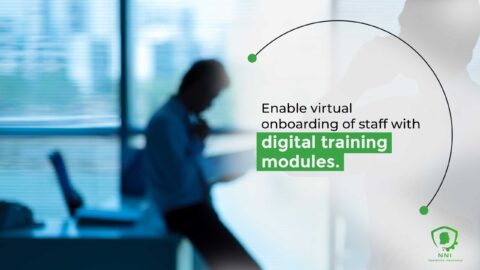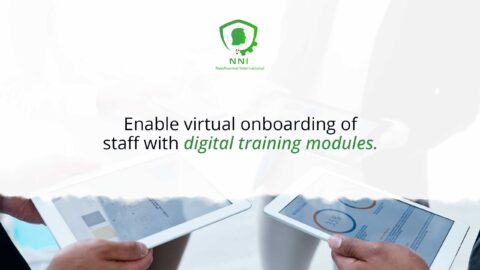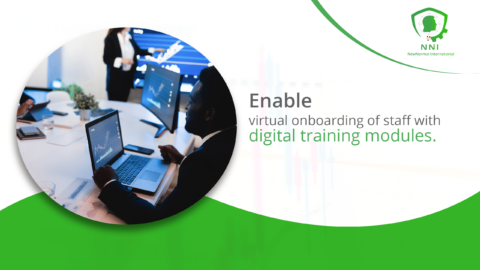Transforming Employee Onboarding Through Digitalization
In an age where remote work and digital processes are becoming the norm, the ability to enable virtual onboarding of staff with digital training modules has become a crucial element for business success. This article explores the impact and benefits of integrating digital training modules into the onboarding process.
The Importance of Digital Training Modules in Virtual Onboarding
In today’s geographically dispersed workforce, traditional onboarding methods are no longer sufficient. Virtual onboarding, coupled with engaging digital training modules, offers a transformative solution, paving the way for a seamless and efficient transition for new employees, regardless of their location. This innovative approach delivers a multitude of benefits:
1. Enhanced Flexibility: Virtual onboarding offers new hires the freedom to learn at their own pace, on their own schedule, from anywhere in the world. This flexibility removes geographical barriers and accommodates diverse learning styles, leading to improved engagement and knowledge retention.
2. Efficient Training Delivery: Digital training modules, featuring interactive elements, multimedia content, and self-assessment tools, ensure consistent and effective training delivery. This standardized approach reduces reliance on physical resources and trainers, leading to cost savings and scalability.
3. Comprehensive Coverage: Digital training modules can encompass a wide range of topics, from company culture and policies to role-specific skills and knowledge. This comprehensive curriculum ensures that new employees are well-equipped to succeed in their roles and contribute meaningfully from day one.
4. Improved Consistency: Virtual onboarding eliminates the risk of inconsistencies in training delivery that can arise from different trainers or locations. Digital modules ensure that all new employees receive the same information and standards, fostering a more cohesive and informed workforce.
5. Scalability and Cost-Effectiveness: Virtual onboarding solutions can readily accommodate a large number of new hires, regardless of their location. This scalability reduces the need for additional training resources and lowers overall onboarding costs.
Beyond these immediate benefits, virtual onboarding with digital training fosters a culture of continuous learning and development within organizations. By encouraging employees to take ownership of their learning journey and providing them with readily accessible resources, businesses can cultivate a highly skilled and engaged workforce prepared for future challenges and opportunities.
In conclusion, virtual onboarding with digital training modules is not merely a technological advancement; it is a catalyst for a more efficient, flexible, and effective onboarding process. By embracing this innovative approach, businesses can remove geographical barriers, ensure consistent training delivery, and empower new employees to become productive and engaged members of the team. In a world where talent is increasingly global and mobile, virtual onboarding with digital training is the key to unlocking a future of seamless transitions, consistent knowledge transfer, and a workforce ready to thrive in the ever-evolving business landscape.
So, embrace the future of onboarding and transform the way you welcome new talent. Let virtual solutions and digital modules be your guide, leading you on a journey towards a more efficient, effective, and globally accessible onboarding process.
Change Management and the Shift to Virtual Onboarding
Effective change management is essential when transitioning to virtual onboarding practices. Adapting to this digital shift requires a strategic approach, ensuring that all stakeholders are involved and understand the benefits of digital training modules.
Leadership and Management Skills in Implementing Virtual Onboarding
In the realm of executive coaching, emphasis on leadership skills for managing virtual onboarding is crucial. Business leaders need to be adept at leveraging digital platforms for training and be able to guide their teams through the digital transition effectively.
Effective Communication in Remote Onboarding
Effective communication plays a pivotal role in the success of virtual onboarding. Clearly communicating the objectives, processes, and expectations of digital training modules is key to ensuring a smooth onboarding experience for new employees.
Leveraging Generative AI in Digital Training Development
The integration of generative artificial intelligence in the development of digital training modules can significantly enhance the learning experience. AI can personalize training content, assess learning outcomes, and provide adaptive learning paths for individual employees.
Conclusion
In conclusion, the decision to “Enable virtual onboarding of staff with digital training modules” is a forward-thinking strategy that aligns with the evolving digital workplace. By adopting this approach, businesses can ensure effective onboarding, better engagement, and higher productivity from their remote workforce.
#VirtualOnboarding, #DigitalTransformation, #HRInnovation, #EmployeeTraining, #RemoteWork











